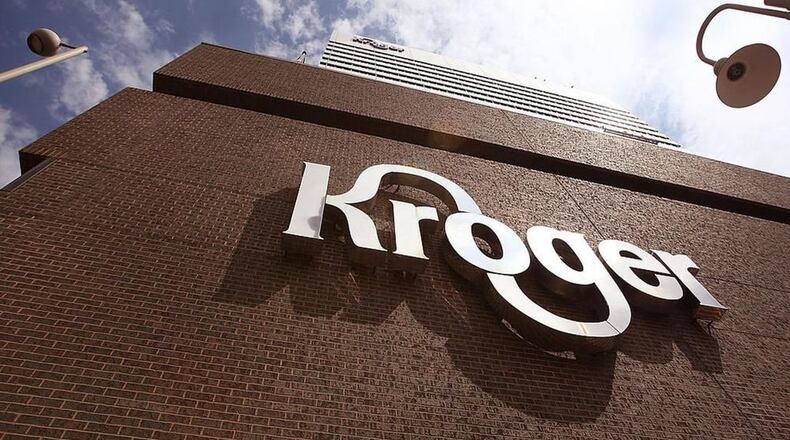Brother, can you spare a dime? National grocery retailer Kroger apparently can’t because the company has stopped giving coins back to cash-paying customers as change.
The reason, the company says, is because of a shortage of coins in circulation due to the coronavirus pandemic. The change in policy began this week.
In a statement to the Dayton Daily News, which is a sister publication of The Atlanta Journal-Constitution, Kroger spokeswoman Erin Rolfes said the Federal Reserve is experiencing a coin shortage. Coin change from cash transactions will be applied to customers' loyalty cards then automatically used on their next purchase.
»COMPLETE COVERAGE: CORONAVIRUS
For now customers are being asked to use exact change when possible. If not, there are a couple of options.
Customers are asked to either round up their payment in support of Kroger’s Zero Hunger Zero Waste initiative, Rolfes said. Or they can have that coin change applied to a customer loyalty card. Any remaining change will automatically apply to the customer’s next purchase under that last option.
The coin shortage has now impacted Walmart as well, according to WMAZ. "Like most retailers, we're experiencing the affects of the nation-wide coin shortage," said Avani Dudhia, spokesperson for Walmart. "We're asking customers to pay with card or use correct change when possible if they need to pay with cash."
Dudhia said cash is still welcome at all of the Walmart stores, but some self-checkout registers have been converted to card-only registers.
Convenience store chain Wawa is making the same request of customers as Kroger.
When people stopped patronizing businesses during various COVID-19 lockdowns around the nation, the number of coins in circulation dropped significantly.
The Federal Reserve warned everyone about this nearly a month ago.
“The COVID-19 pandemic has significantly disrupted the supply chain and normal circulation patterns for U.S. coin,” the Fed said June 15. “In the past few months, coin deposits from depository institutions to the Federal Reserve have declined significantly and the U.S. Mint’s production of coin also decreased due to measures put in place to protect its employees.”
On that day, Reserve Banks and Federal Reserve coin distribution locations began allocating coin inventories, “based on historical order volume by coin denomination and depository institution endpoint, and current U.S. Mint production levels,” the Fed said then.
About the Author
Keep Reading
The Latest
Featured


